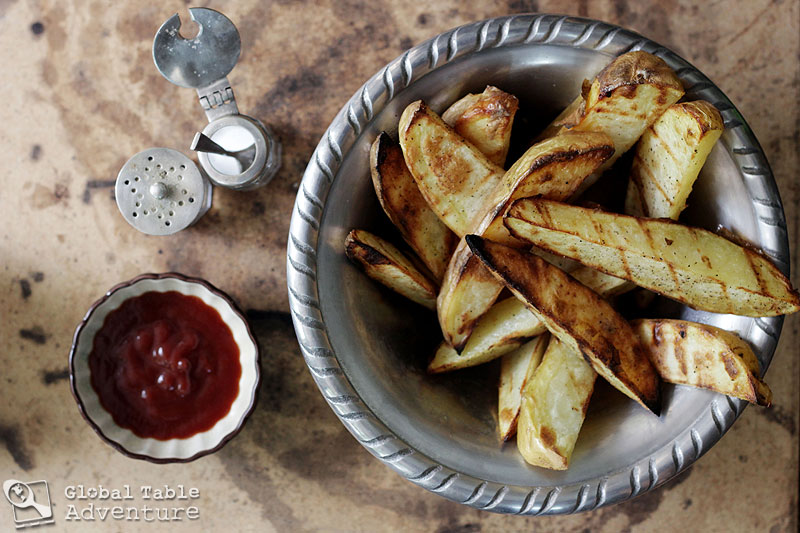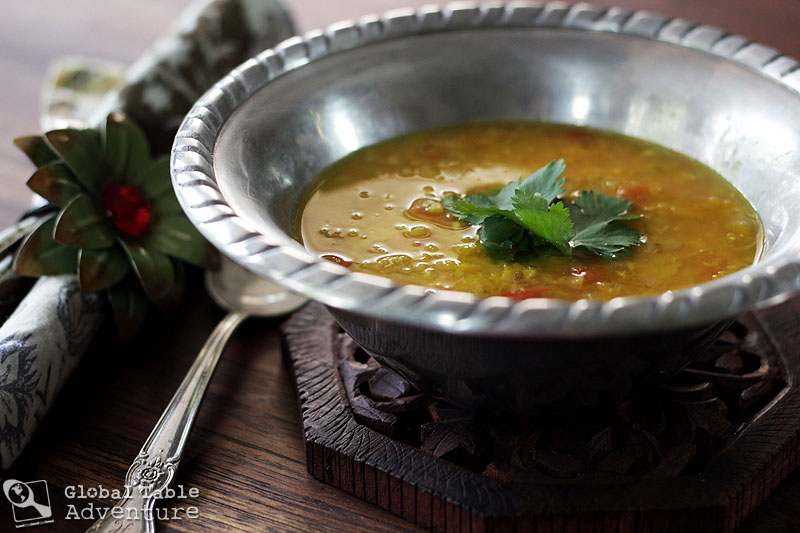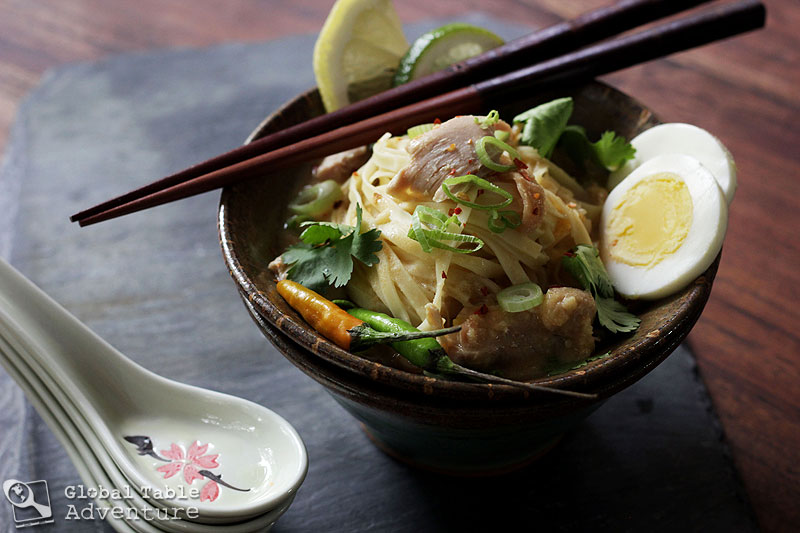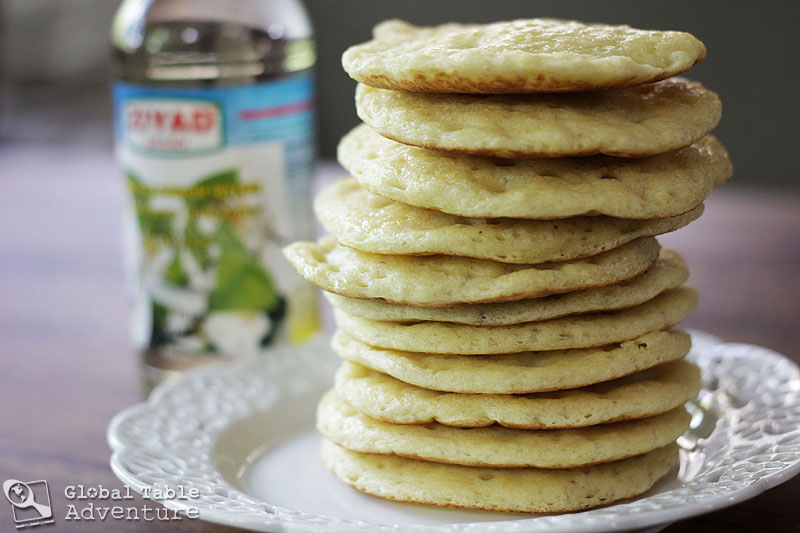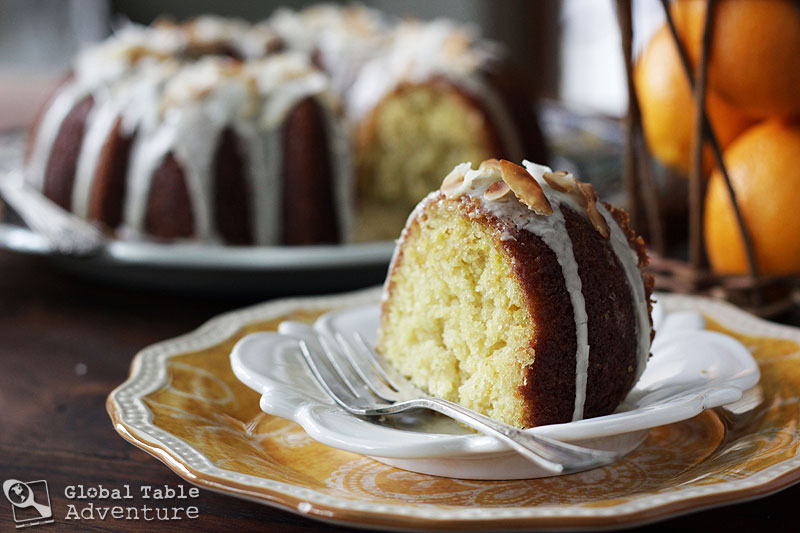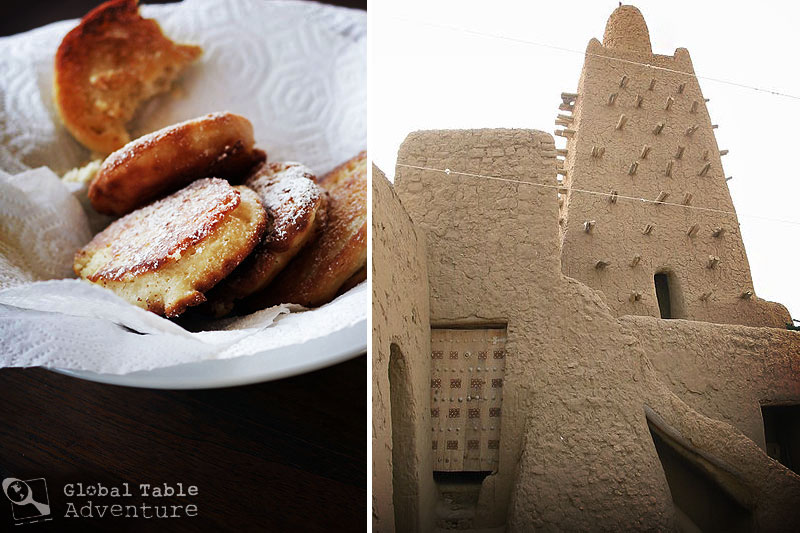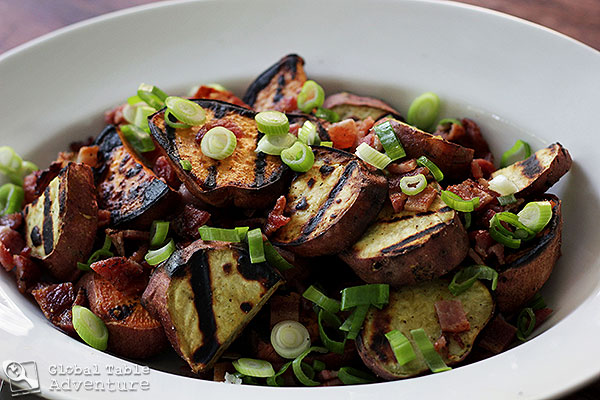
When I read that New Zealander’s love “kumara,” I wondered what this dreamy word could mean. When I found out kumara are simply a variety of New Zealand “sweet potatoes,” I was thrilled. Sweet potatoes are on my “will-eat-any-time-of-day-for-any-reason-especially-for-my-last-meal” food list. Not many foods make that cut. Today’s salad takes inspiration from New Zealand’s love of barbecue. For color I combined two kinds of sweet potatoes on the grill before tossing them with bacon, green onion, and a quick, zingy honey mustard dressing. This is grilled sweet potatoes, dressed up for a party in your mouth. P.S. Since I couldn’t get my hands on actual kumara, I used an orange fleshed sweet potato and a white fleshed sweet potato. This makes for a really pretty salad. If you do the same, be sure to watch the cooking times. Some varieties tend to cook quicker than others. P.P.S. New Zealander’s love grilled lamb, especially with rosemary. I’d highly recommend serving these kumara with our Grilled Greek-stye Lamb from back in the day. The lamb is seasoned with rosemary, …
Read More
Ok. So even in the summer I crave french fries. But I don’t crave heating up a big pot of oil inside the house. There’s a solution: grilled fries. The fine people of Nauru love their fries. While most of them enjoy deep-fried fries, we covered that with Belgium Pommes Frites. So, inspired by their island setting – where the fine people of Nauru love to grill – I thought it’d be fun to try grilled fries. And it was fun. In my research I found several ways to make these, including boiling the potatoes and then slicing (again, who wants to heat up the house with a big pot of bubbling water? Not me!). I decided to try something different. Something simpler. I crossed my fingers, shut my eyes, and hoped against hope that it would work. And it did. Here is how I did it. Serves up to 5 Ingredients: 5 large yukon gold potatoes, washed vegetable oil salt & pepper Method: First, find the largest yukon gold potatoes you can. You can …
Read More
If you wake up in Nepal, chances are you’ll be eating Dhal Baht. In fact, you’ll probably also eat Dhal Bhat as the sun bobs below the horizon. Nothing wrong with eating the same dish twice in one day. There’s a beautiful simplicity in waking up and knowing that, as certain as the sun will circle the sky, there will be Dhal Bhat. Ah, yes. There’s something to be said for consistency. And for not having to make quite so many decisions during the day. I’m not sure what in my life is that certain. Perhaps my daily cups of tea. All day long I drink glass after glass of the stuff. This fancy name simply means lentils, split peas, or other pulses (dhal) with rice (baht), but each bite reveals so much more. This might as well be the national dish of Nepal. While rice doesn’t grow well in the mountains, this is a dish from the valleys. The seasonings in Dhal vary widely, but most commonly this soup-of-sorts contains tomato, turmeric, ginger, onion, and garlic. …
Read More

Today let’s stove top travel to Nepal, sit in the afternoon sunshine, and make our own little mountain ranges, good enough to eat. Momos are carefully folded dumplings, each crease like a ridge in the most glorious of mountains, Mount Everest. (Did you know Nepal has 8/1o of the world’s tallest mountains?) This is a recipe for quiet days. Contemplative days. Days when you want to be more, learn more… and find out what you’re made of. With each fold you evolve. Listening becomes easier. Being present is the only option. Today’s recipe is entirely vegetarian, made from a a traditional combination of cabbage and carrot, seasoned with golden turmeric, fresh ginger and sweet onion. You’ll find similar recipes south, towards India and across Tibet, through China. From what I understand you can fold your momos in circles or half moons. The circles are typically used for meat while the half moons are typically reserved for vegetarian. You can also steam or deep fry them, although steaming is the most popular. NOTE: In case you …
Read More
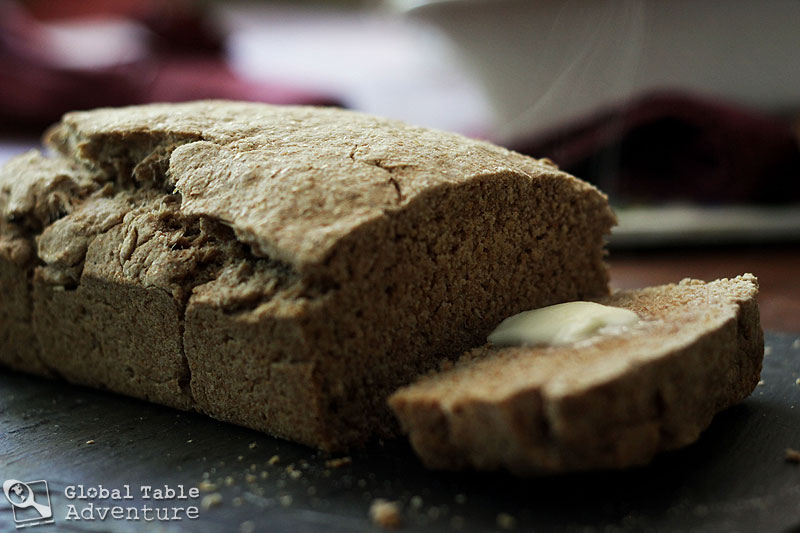
Today we’re traveling to the sandy, dusty plateaus of of Southern Africa where you’ll find the Veldt – large expanses of wilderness, often filled with scrubby bushes and the occasional scraggly tree. Here, too, you’ll find prowling lions, circling scavenger birds, and hearty veldt bread – which pretty much means bread of the wild. According to the World Cookbook for Students, this quickbread was created by European settlers as a way to nourish themselves with familiar ingredients in an unfamiliar land. Since it’s leavened with baking powder, there’s no long rise time – just pop in the oven (or over a campfire) and chow down. No muss, no fuss. Spices like ginger, cinnamon and cloves give this rugged, dense “wheaty” bread a lovely lift. Much like Irish soda bread, Veldt bread tastes best when steaming hot, slathered with butter. So go ahead, set up camp by a Namibian sunset and enjoy a slice. Makes 1 loaf Ingredients: 3 1/2 cups whole wheat flour 1 1/2 tsp baking powder 1/2 tsp salt 3 Tbsp brown sugar 1/2 …
Read More
Oh, yes. Even on the hottest day in steamy, tropical Myanmar, you’ll find gaping bowls heaped with noodles, chicken, and silky coconut curry. It doesn’t matter if you’re sick. It doesn’t matter if your skin is tacky with salty sweat. “Ohn no khao swe” is what’s for dinner. . You can call it Coconut Chicken Noodle Soup, if you’d like. To a local, this curry topped with egg and a garden of garnishes is breakfast, lunch, or dinner. It’s as easy to find in rambling shacks as it is in roadside stalls. I can’t get over how easy it is to make. Chop a few things, toss them in a pot and simmer. After a happy mingle serve with noodles and enough garnishes to bring out even the Grinch’s smile, not to mention little Miss Ava (have I told you lately how much kids like to help build their own meals?). . The secret to making a great ohn-no-khao-swe is in the toppings. More specifically, in assembling your own bowl, just as you like it. If you do …
Read More
Oh, goodness. Where do I even begin? Do you see that honey dripping off the edge of the crater cakes? Each drop is perfumed with the haunting aroma of orange blossom water and butter. Hello. I mean, really. I’m pretty sure I can just pack up and go home now. My job is done. Talk about good-glorious-eats! But, for those few who aren’t yet sure if this Moroccan treat – officially called Beghrir – is right for their breakfast table, let me continue. These semolina pancakes aren’t really pancakes. They are fried on one side only. The other side is utterly soft and yeasty, and pocked with thousands of holes. The bottom is crispy, while the top is light and airy. They’re like a crumpet’s long lost cousin. The holes are perfect for catching pools of orange blossom honey sauce, by the way. While some like them almost as thin as crepes and as large as a dinner plate, you can also make them smaller and a bit on the thicker side, as I did. The choice is yours. For …
Read More
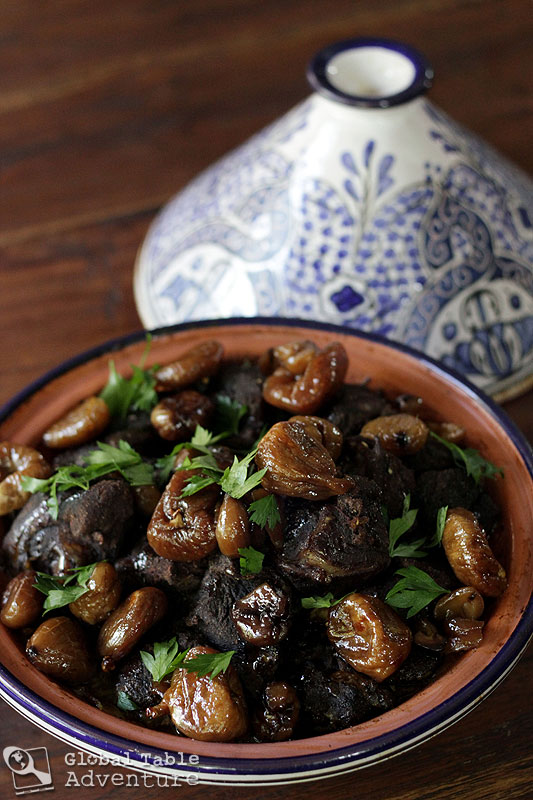
Today I’m taking you to a special place where family and friends gather around the dinner table with happy hearts. Silverware is optional, but bread is not. Settle into this sacred space, where tagine of lamb meets chestnuts, figs, cinnamon, honey, and orange blossom water. Pause for a moment to celebrate this crazy wonderful combination, to feel the hot air blow through your hair, then dig in and scoop up the glory with a handful of bread. When you’re done, cozy up to an evening of conversation so good you wish you could bottle it. Tagines are Moroccan party food – each nibble is filled with glorious, cheerful flavor; a festive bite of beauty; a deep, dark bowl of goodness, glimmering like the Moroccan night sky. To be honest, there was a time when the word “tagine” sent shivers down my spine. The very word sounded terribly exotic which, in my mind, translated to “extraordinarily difficult to make.” If I only knew how wrong I was. I’ve since learned that many Moroccan tagines, such as …
Read More
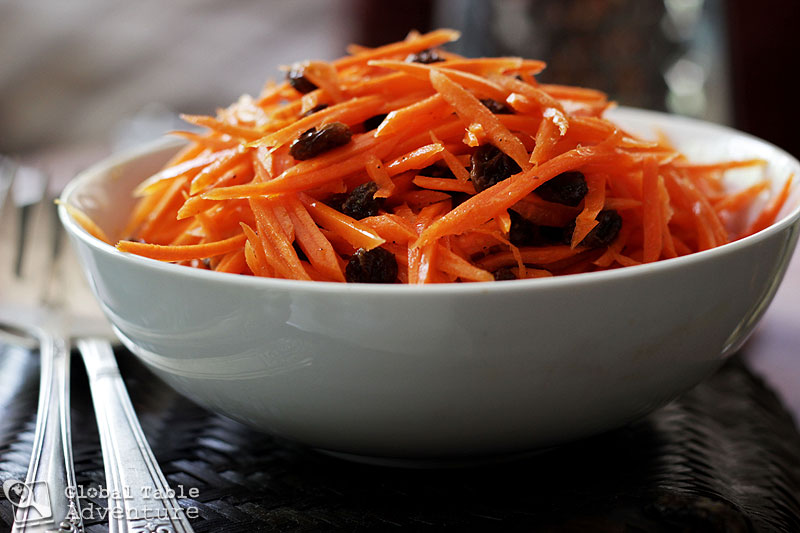
In Mongolia, the seemingly endless parade of meat, meat, and more meat, is only occasionally interrupted by vegetables. And, even then, relief doesn’t come with a garden salad, but rather some combination of root vegetables. This is because there really isn’t a whole lot of good farmland in the giant, cold, central Asian country – only the hardiest specimens make it. In the big city, versions of this simple carrot salad can be found, either dressed in a vinaigrette (as I have done) or in a mayonnaise/sour cream based dressing. So head to the market with me, and let’s stove top travel over to Mongolia! (Can you find the carrots in this picture?) Serves 4-6 Ingredients: 1 lb carrots, grated or julienned (on a mandolin is easiest) 1/2 cup raisins, soaked in hot water For the dressing: 1 large clove of garlic, grated 3 tablespoons vegetable oil 2 tablespoons white wine vinegar 1 1/2 teaspoons of sugar salt & pepper, to taste (be sure to use plenty of salt to bring out the flavors) Method: After picking up some …
Read More

I’ll be honest. On the onset, learning how to make Mole Poblano sounded a lot like learning how to knit a wedding dress. Outrageously epic, but not entirely something I had the skills for. In case you’ve never heard of it, we’re talking a Mexican recipe from Puebla that has a million, gazillion ingredients (ok, really just about two dozen), many cooking phases, and centuries of history behind it. Yikes. After staring at dozens of recipes, drinking several cups of tea, and more than a little sleep lost, I broke mole poblano down into 5 basic steps. Deep sigh. Smile. This feels better. Five steps are manageable. So, my goal today, is to make you Mole happy. To encourage you to give it a try. Because if you do, you’ll be in Mexico with every bite. NOTE: This Mole Poblano is vegan, although you can serve it on whatever you’d like – veggies, meats, etc. Traditionally it is served with turkey and made with turkey stock. Makes 6-7 cups Ingredients: These ingredients get toasted: 1 Tbsp …
Read More
Sometimes waking up to pancakes just isn’t enough. Sometimes I want to travel to Africa all in a single morning – all the way to Timbuktu – and be home in time to take my daughter to the park. And then I want a doughnut. Is that too much to ask? I think not. Enter our hero – today’s recipe for the eager stovetop traveler – Maasa. Maasa is a special gift for our gluten-free stovetop travelers. (Hi, there. I hope you are hungry!) Every once in a while I happen upon a recipe that is naturally gluten-free. First, there were the quesadillas from El Salvador (super yum and award-winning, by the way). This week we’re going gluten-free with Maasa – a sweet treat from Mali made with rice flour and millet flour, the two most common grains in the region. Maasa is served fresh from roadside stands, hot from shimmering oil and blanketed in a cozy layer of powdered sugar. One bite in, and you’ll see why I couldn’t settle on a name; this is a yeasty, …
Read More


